The art of working with hot glass is an ancient skill that still exists today. Craftspeople create spectacular sculptures and extraordinary shapes using hot molten glass and bespoke tools to shape the viscous material, almost exactly in the same way they did centuries ago.
Italy and the Czech Republic have long been known as countries where glassblowing was a dominant industry but the UK, and other countries, are fast catching up with a new generation of artists applying their skills to the craft.
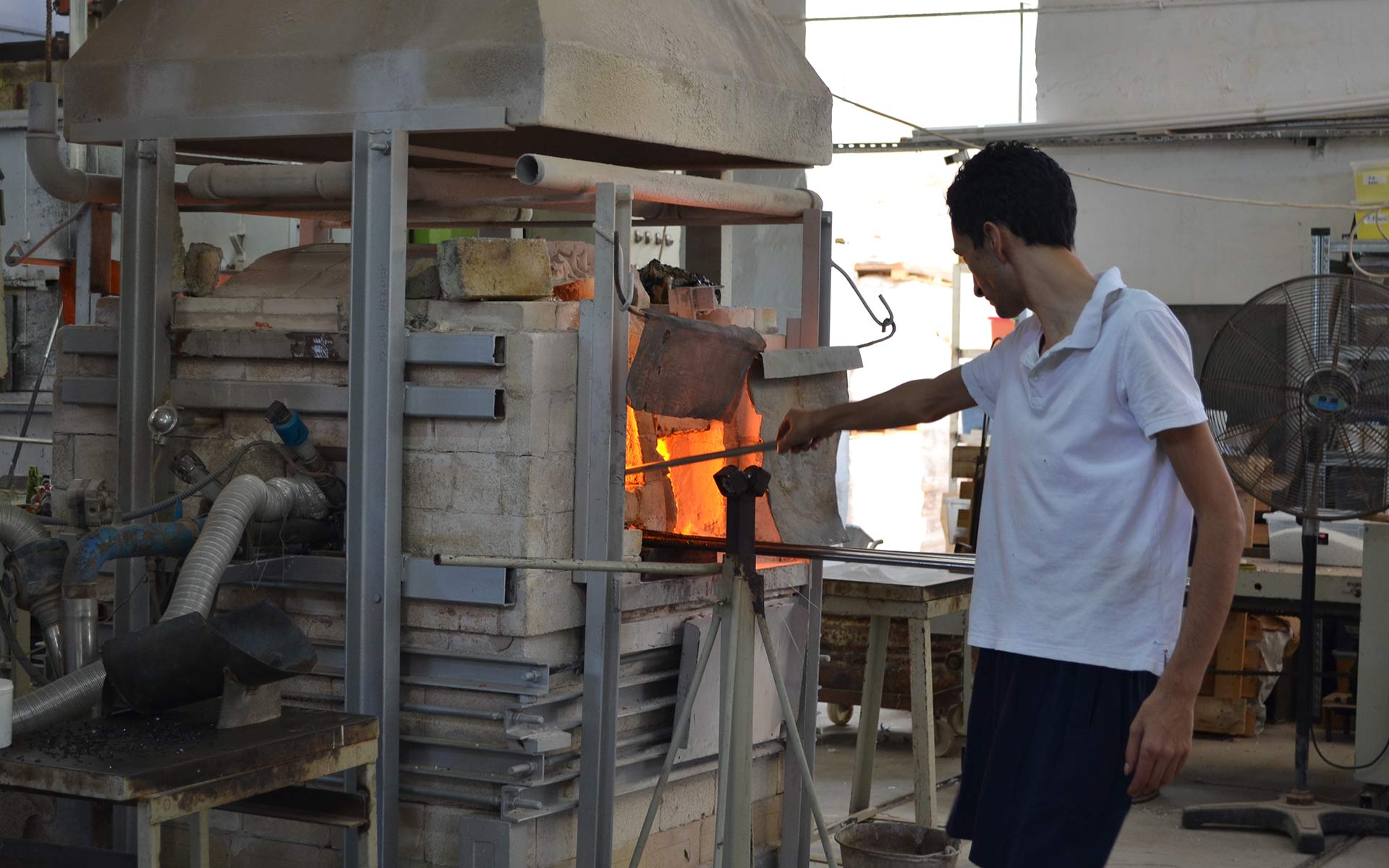 A glassblower in Malta utilising a makeshift furnace
A glassblower in Malta utilising a makeshift furnace
As history tells us, a glassblower’s knowledge was thought to be very precious. So precious that if makers located on Murano, Italy, disclosed the secrets of their techniques, the punishment could include death. It’s possible that the secrecy of such a precious material, still to this day, is why glass is perceived to be a luxurious material that can only be tamed by truly skilled and experienced craftspeople.
The process of glassblowing has evolved slowly, with today’s makers still using the exact same implements, methods and workshops of those used for centuries – if it’s not broken, why try and fix it? That said, many artists today are using 3D printing as a master for mould work to produce a variety of new forms that were once difficult to produce before this technology existed.
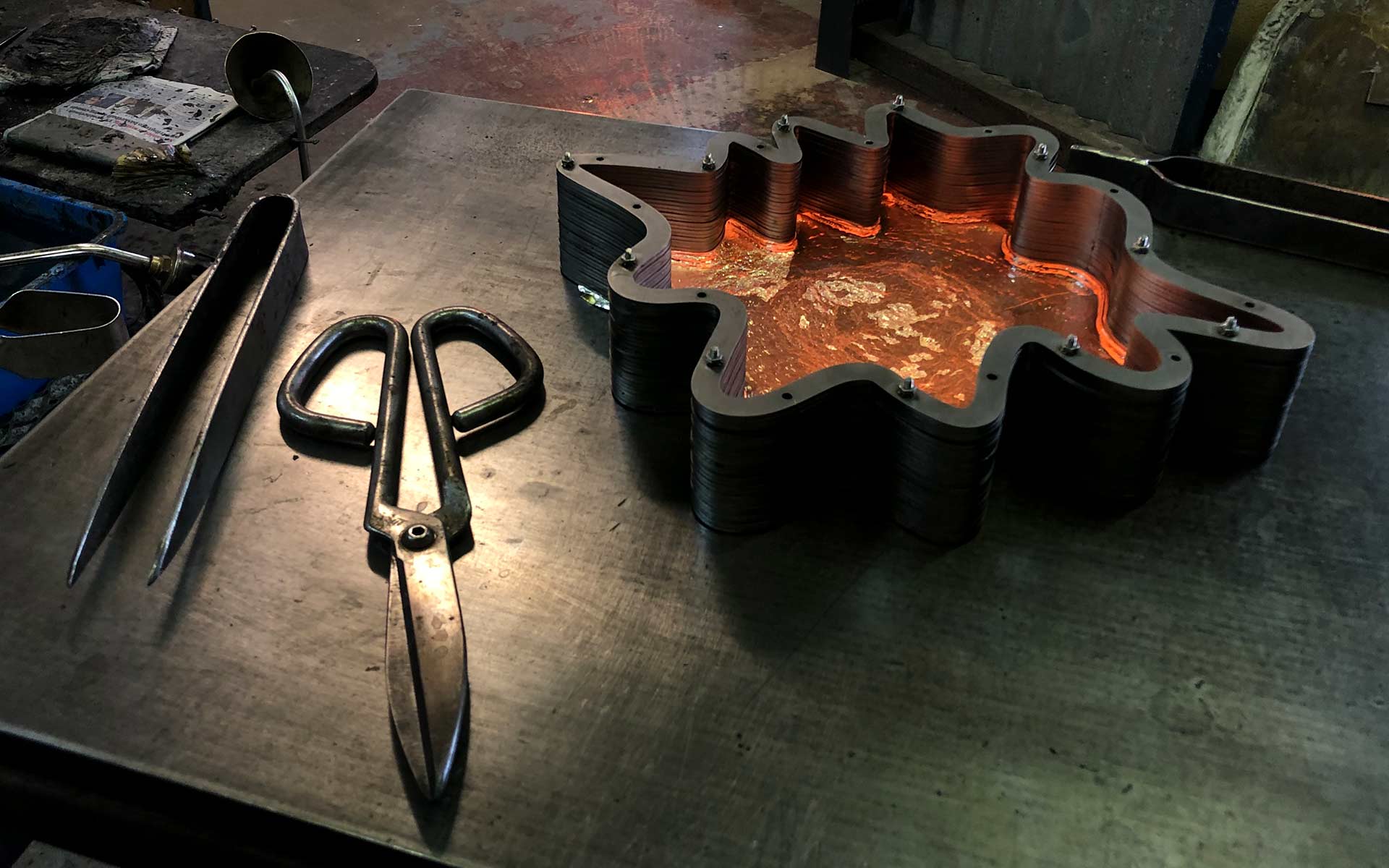 Development of a Nulty Bespoke pendant using a mould
Development of a Nulty Bespoke pendant using a mould
Using moulds made of wood, plaster or metal within glassblowing allows for a more supported approach to glass and lends itself to more geometric or clean-cut shapes. Crisp, sharp lines or surface textures can be “cut” into the glass with another technique called cold working. It can, however, be time-consuming and an expensive process.
The basics of a glassblowing workshop consist of a large furnace with clear molten glass heated up to 1000 degrees and left running continuously. Clear glass is always used first as the base material, which can then be “gathered” and combined with coloured chips, powders or gold leaf before heating in the glory hole (a small open furnace) until finally shaping and blowing at the bench.
Glassblowing is where science meets art, combining chemical reactions and forces to manipulate the red hot form: from physical blowing, gravity and using centrifugal force to a mixture of metals and powders (like copper oxide) that react with heat, and, believe it or not, cooking ingredients such as bicarbonate of soda that can produce an explosion of tiny air bubbles like captured constellations trapped within the layers of glass.
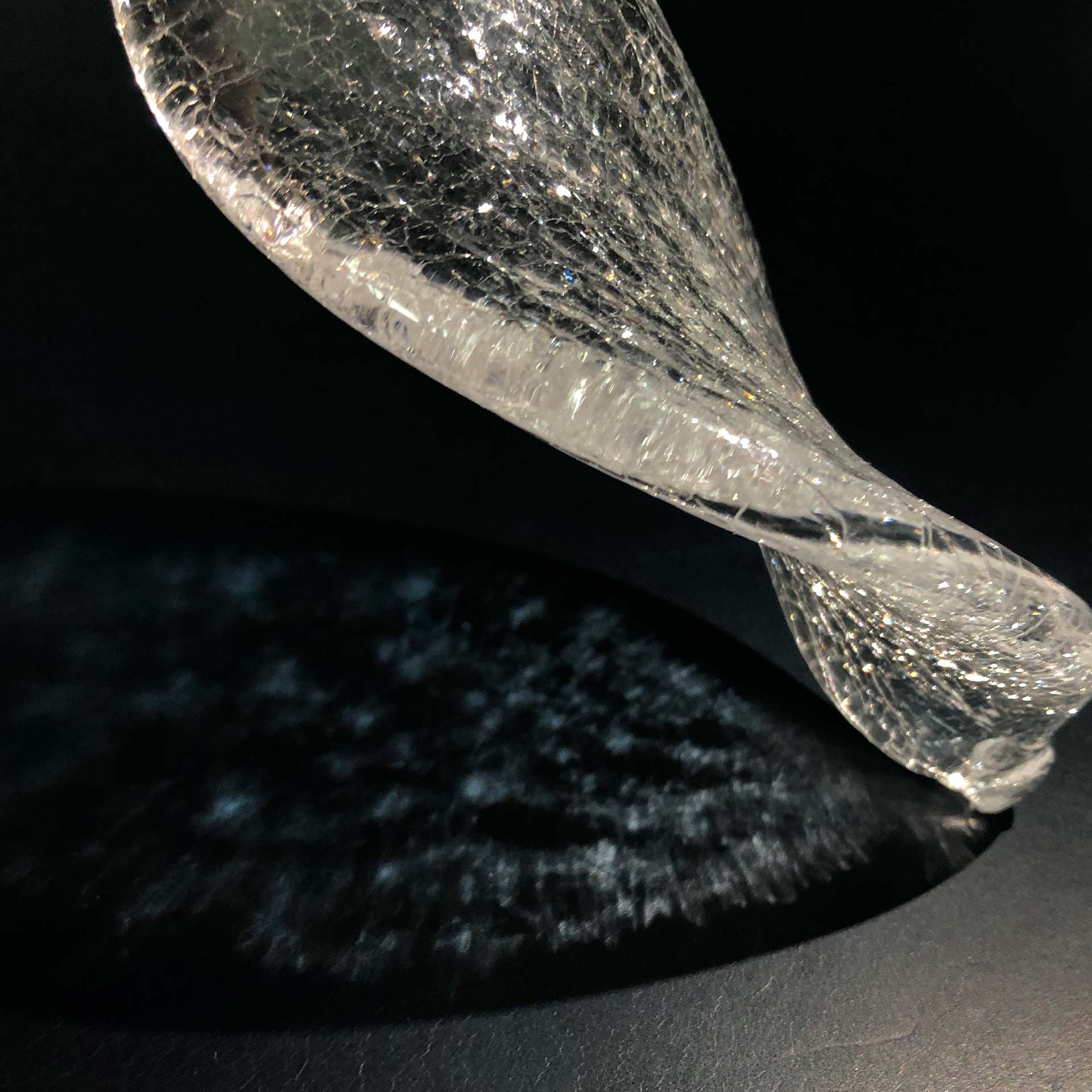 Crackle glass effect sample with point source projection
Crackle glass effect sample with point source projection
Glass has a phenomenal relationship with light, provoking the medium by refraction, distortion, diffusion and projection, which can transform an environment instantly. Using a narrow beam spotlight to project onto a transparent distorted blown glass surface, made by pinching, twisting or pulling with tools, can create a beautiful wash of patterns on flat surfaces such as walls, dining tables or ceilings. In addition to pinching, twisting and pulling, glass can be manipulated by blowing two pieces inside one another or “popped” open using a heated torch. These methods allow for abstract shapes and asymmetry showing fluid-like forms that evoke movement and simplicity.
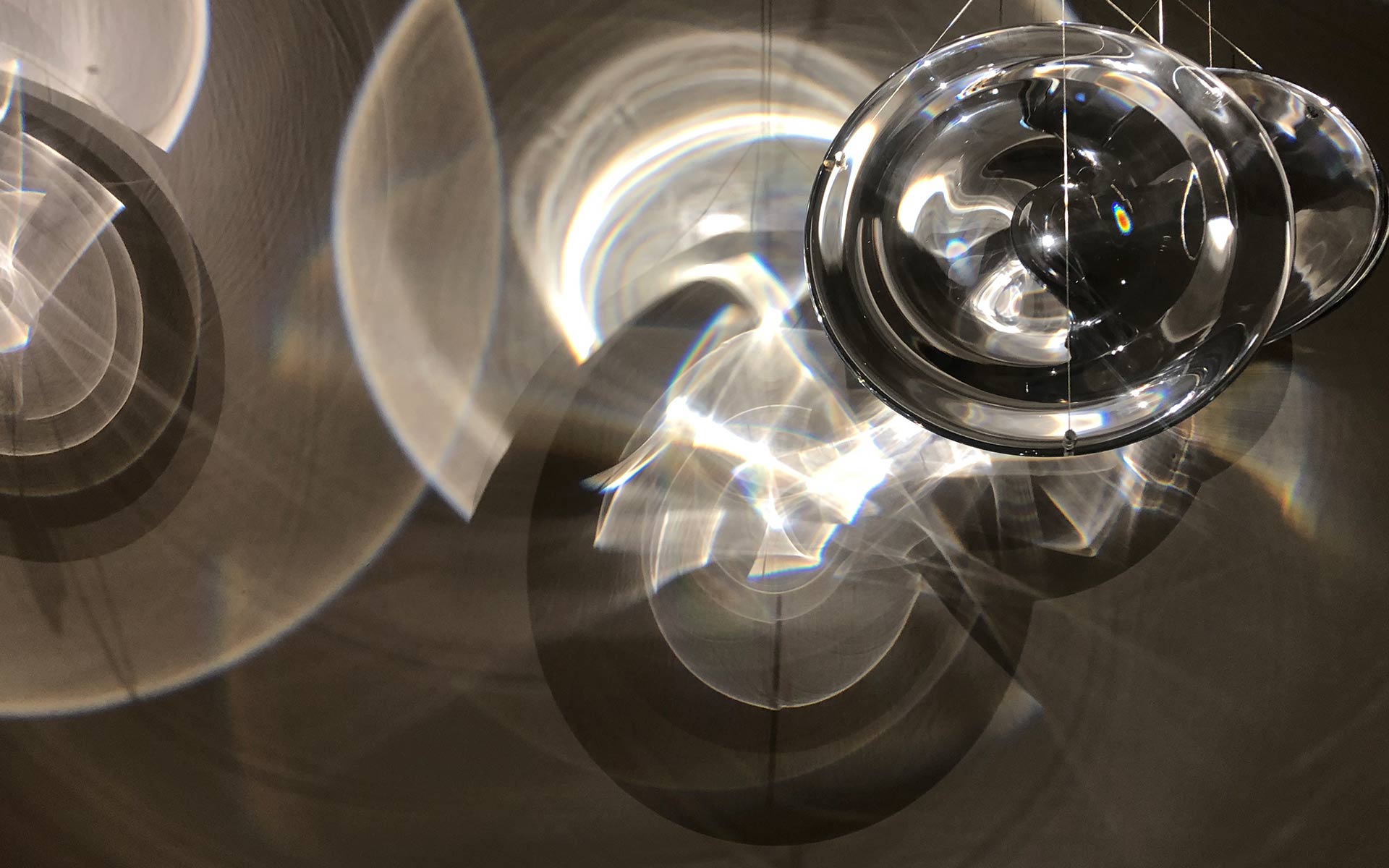 Shuster + Moseley artists using glass and refraction (Image: Shuster + Moseley)
Shuster + Moseley artists using glass and refraction (Image: Shuster + Moseley)
Taking another approach, coloured chips can turn glass a complete homogeneous colour, either opaque or translucent, as it mixes with the clear base glass. From opal whites that are perfect for diffusing the light for an ambient glow to smoky greys, olives and burnt ambers, using a range of frits (finely crushed pieces of glass) in a variety of subtle colours can create depth and texture in designs.
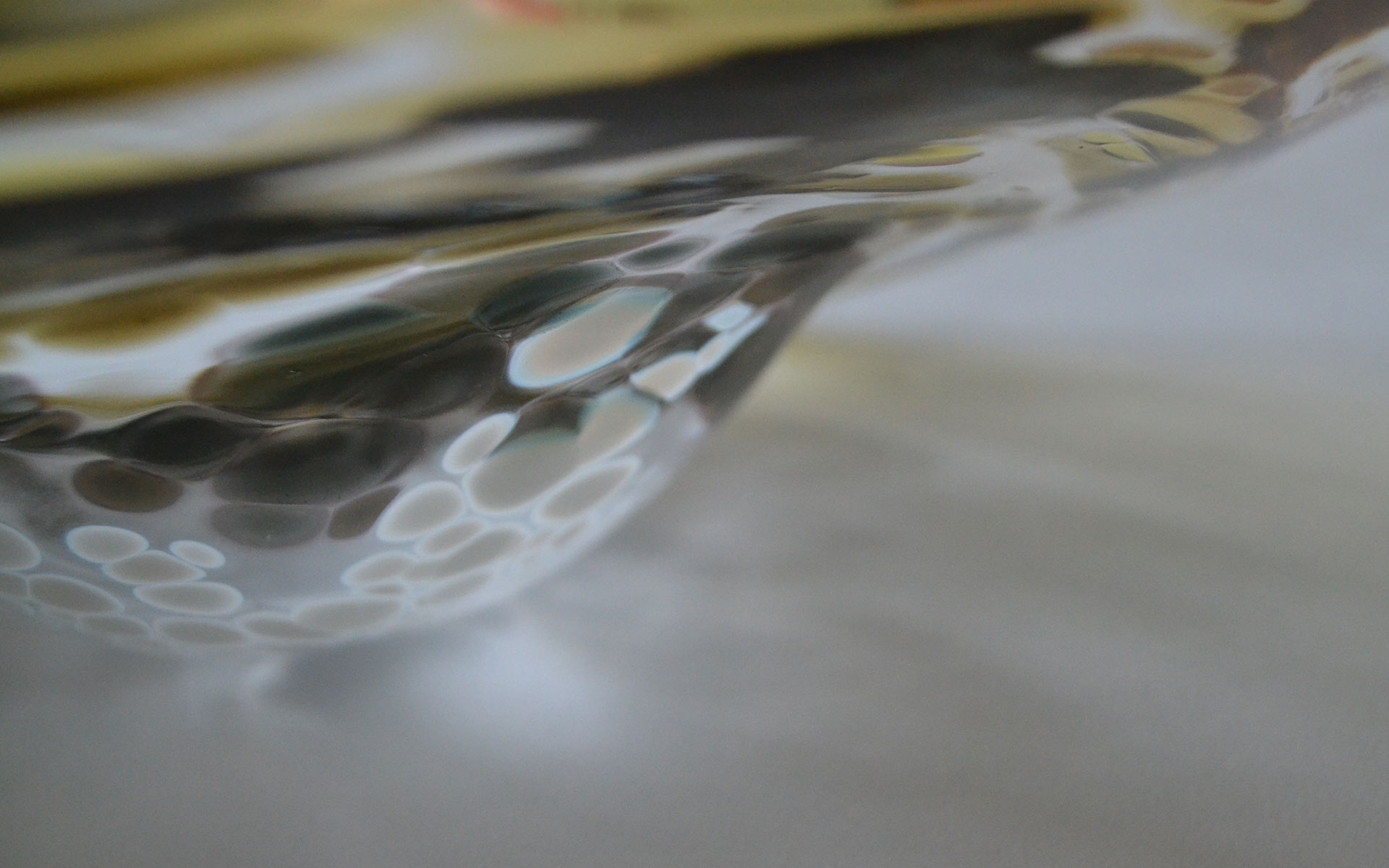 Combination of amber and olive frits embedded into clear glass from our Perla Pendant
Combination of amber and olive frits embedded into clear glass from our Perla Pendant
Applying a recipe of form, colour, texture and pattern can open up a wide range of opportunities in bespoke lighting that can be applied to various interior styles, from traditional to contemporary. It’s with these techniques and processes in mind that we can produce beautiful one-of-a-kind artisanal glass components that individually tell a story not only by appearance and design, but also by the history and process of this specialist craft.
More in our Materials Matter series can be found here: Ceramics and Acrylic